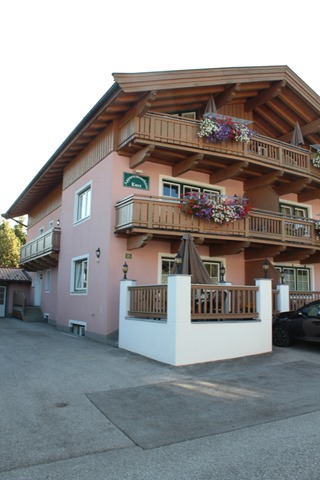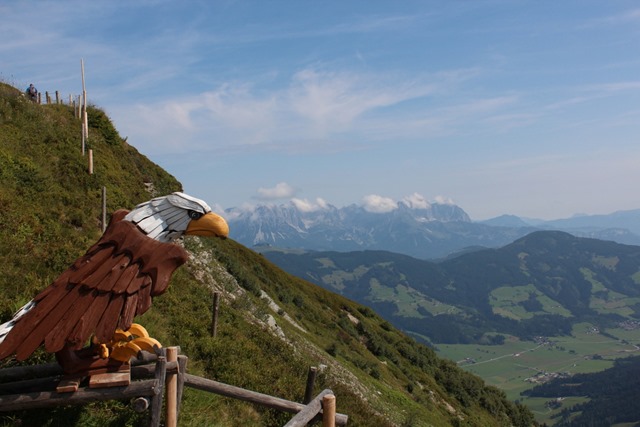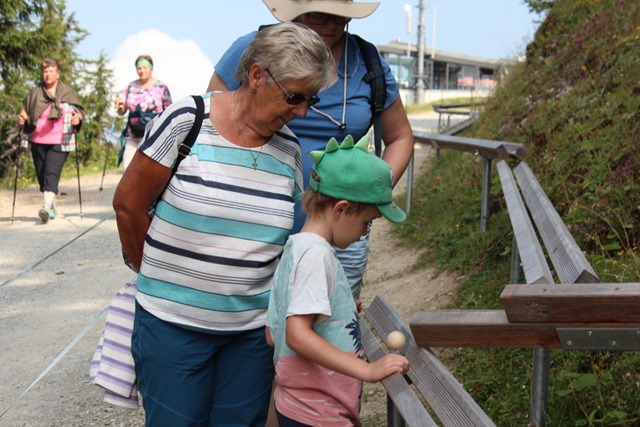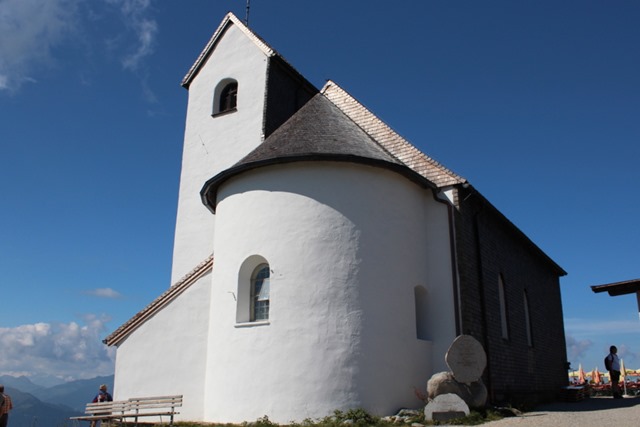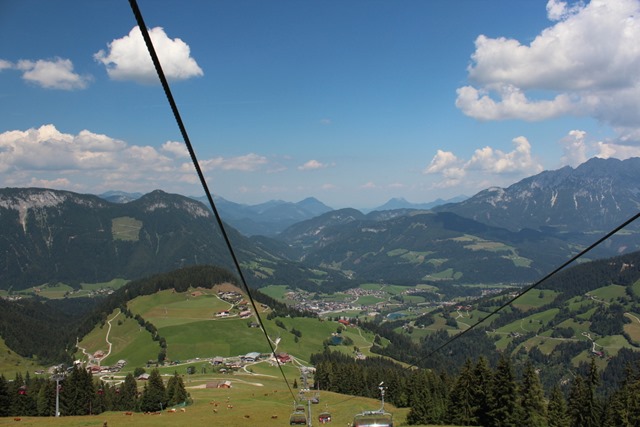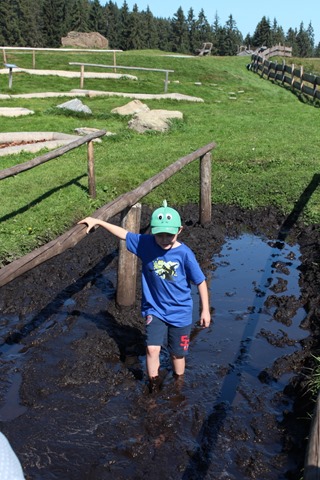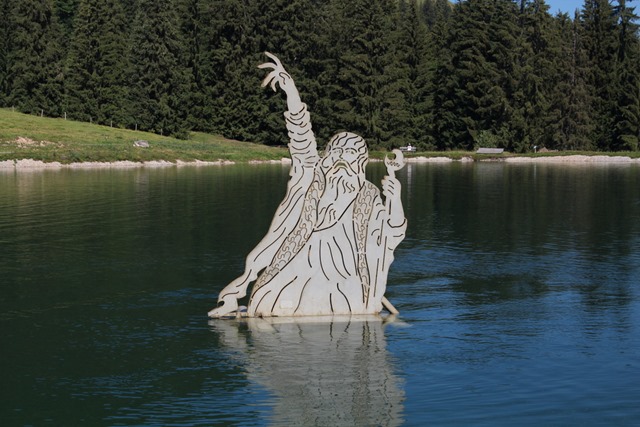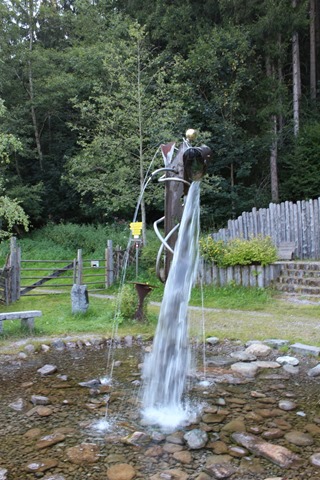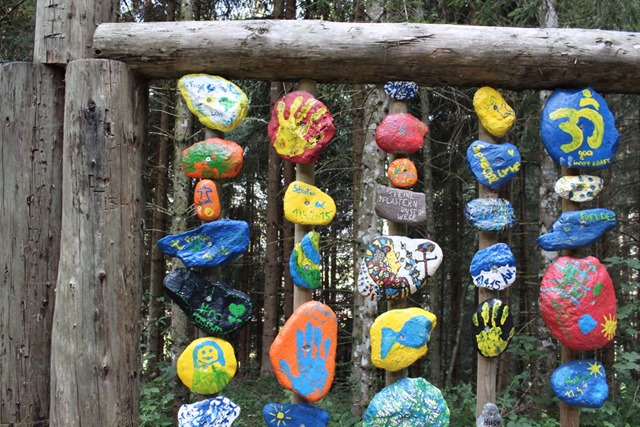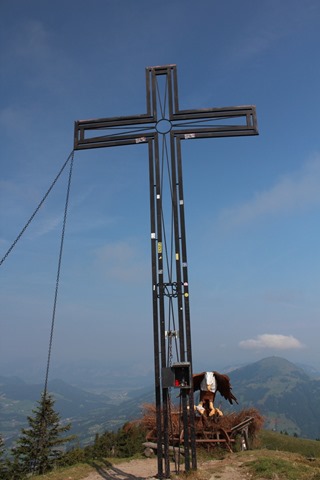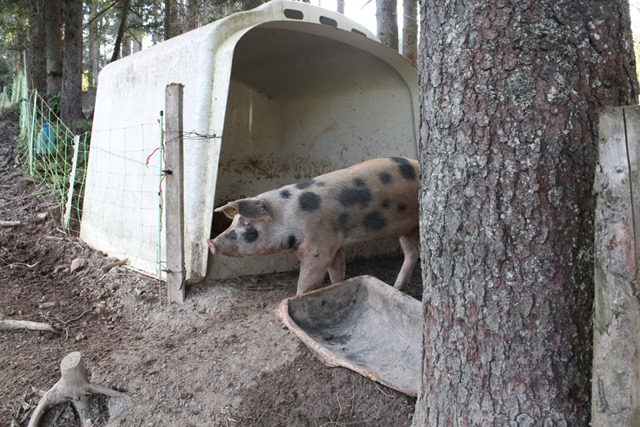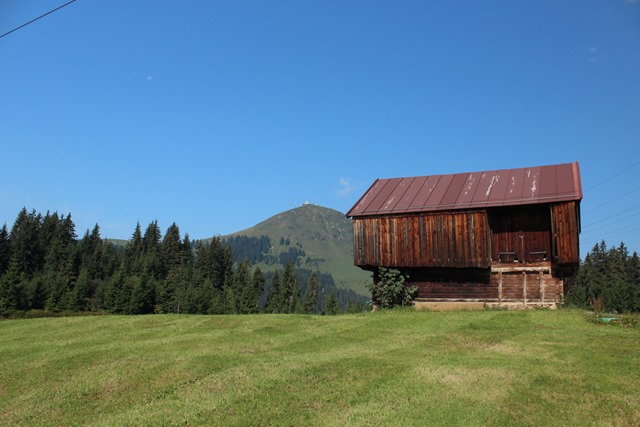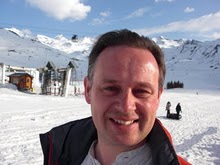Author's posts
Oct 14 2018
Book review: The Silk Roads by Peter Frankopan
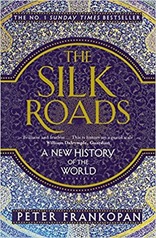 The Silk Roads: A New History of the World by Peter Frankopan. A panic buy for holiday which I have only just gotten around to reading, it was recommended by a colleague after we’d talked a little about the East India Companies and the development of trade.
The Silk Roads: A New History of the World by Peter Frankopan. A panic buy for holiday which I have only just gotten around to reading, it was recommended by a colleague after we’d talked a little about the East India Companies and the development of trade.
Frankopan’s twist is to consider the history of the world focussing on the Silk Road routes which run from Europe though to China. The centre of this route is the Middle East rather than Western Europe where histories more traditionally focus. In the early years trade didn’t run continuously from Western Europe to China, it met somewhere near the centre with merchants trading between their home countries and the centre, somewhere close to Baghdad.
The book is arranged chronologically in chapters with the geographic focus allowed to drift as the events dictate. Each chapter describes a set of related events, and feels free-standing. The emphasis is very much on the flow of trade, people and invasion. It feels like we rarely sit in one place and allow events to unfold there.
Somewhat to my surprise the book covers pretty much all of human history from the time of Alexander the Great to the 21st century wars in Iraq and Afghanistan. The coverage is very big picture, it isn’t too interested in individuals, battles or places but the broad sweep.
The story starts with the rise of the Roman Empire, followed by the influx of Christian thinking in the later Roman period, then comes Islam, rising up from the south. Next come the Vikings, and the fur trade from northern Europe into Baghdad driven by the wealth in the region. The Vikings were to become the Russians (from Rus for red). The Vikings were keen slave owners which led to a trade in slaves (Slavs is derived from slave). The Italian greeting Ciao is a contraction of “I am your slave”. At its peak the Roman empire was taking 250,000-400,000 slaves per year and the Middle East took more than that.
Trade with the Middle East meant that Arabic coinage was found throughout Europe in the latter part of the first millenium. King Offa (fairly local to me in Chester with Offas’s Dyke just down the road) made coinage with (bad) Arabic on its reverse.
The Christian empire began a revival in the 10th century, leading to the Crusades. Italian city states (Venice, Genoa) were vying for supremacy in the region at the time. Their trade deals are reminiscent of those struck by the East India Company much later.
They were stopped by the rise of the Mongol Empire, which only narrowly failed to invade Western Europe. The Mongols, despite their reputation, were highly organised and implemented low taxation on goods passing through their Black Sea ports. The long distance sea routes were important because they enabled goods to travel untaxed but for their origin and destination, rather than at each country on the way. There then followed the black death, which killed upwards of 75% of the population in some cities. It led to rises in the wages of the surviving workforce.
At this point, in the late 15th century Western Europe finally came to the fore, with the Portuguese and Spanish conquest of the New World and Vasco de Gamas sea route to India bringing in huge wealth in the form of gold and silver (and decimating the American people with violence and disease in the process). By the 17th century the focus in Europe had shifted to the northern countries like the Netherlands and Britain and their trading activities in the Middle East and India.
Moving into the 19th century, Britain started to see Russia as a threat to its Indian Empire. The First World War comes as the Ottoman Empire falls and Britain finds itself siding with Russia against the Germans, somewhat surprisingly given the historic good relationship with Germany. Oil starts to become important, Britain gains oil concessions in Persia in the run up to the First World War. The increased usability and efficiency it brings to the navy is seen as critical to holding the Empire together. After the First World War the French and British divide up the Middle East in the (secret) Sykes-Picot Agreement.
Part of the expansion of the Roman Empire was access to the grain reserves of Egypt, echoed in the 20th century by the (failed) German invasion of Russia. The German aim was to take the grain belt of southern Russia to provide desperately needed food for the fatherland. Chillingly they realised this meant the death of millions, and they were determined it would be Russian millions. As it turned out they ended up killing the Jews in the Holocaust, prefigured by their long persecution of them.
The remainder of the book covers the post-World War Two period and revolves around oil, the decline of British power, the rise of Russia, the US, and the Arab states – finally benefiting from their oil wealth in the 1970s. This comes into my living memory so I tend not to consider it history. It is salutary to be reminded how the events we see unfolding today have very deep roots in history.
I found The Silk Roads fairly readable although a bit of a slog until I realised that the main text finished about two thirds of the way through the book to make room for the extensive notes. I would have welcomed a big pull-out map to locate the many cities mentioned, and a timeline.
Sep 30 2018
Book review: Behavioural Marketing by Dave Walters
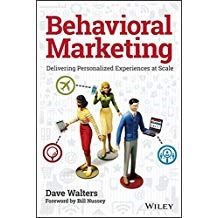 Here I branch out into completely new territory with Behavioural Marketing by Dave Walters. I wanted to learn more about other areas of endeavour outside of data science, and I sit between the marketing services department and the internal marketing department at work. So here I am.
Here I branch out into completely new territory with Behavioural Marketing by Dave Walters. I wanted to learn more about other areas of endeavour outside of data science, and I sit between the marketing services department and the internal marketing department at work. So here I am.
It turns out that actually I haven’t travelled so far, data is at the core of behavioural marketing. It is clear from how Walters writes, in 2015, that this concept has not penetrated to the heart of marketing which traditionally has been a more “creative” industry where crafting that perfect message has been the core of the job, rather than ensuring the perfect message is sent to the right potential customer.
Behavioural marketing is marketing that is responsive to the behaviour of the customer, so for example marketers might set up a set of emails that are triggered when you visit a website or put things in your shopping basket but then navigate away before buying (the so-called “abandoned cart”). The first such email might simply be a reminder that you had left items unbought, the second might ask if you have any questions and the third might be an offer of reduced price.
The book is divided into three parts which broadly cover an introduction to behavioural marketing, implementing behavioural marketing in an organisation and advanced topics (how to become immensely rich and successful as a behavioural marketer and what the very best behavioural marketing brands are doing).
During the preamble to these parts the “behavioural marketing manifesto” is provided, quite deliberately, in 50 tweet sized chunks for you to disseminate:
“Almost every sale begins with marketing. Get it right, then scale”
“Care more about what your audiences do than what they say”
These two quotes capture the core message of the book, the job is to measure what your prospects are doing (automatically) and then send them customised messages. The idea here is that process is largely hands off.
Behavioural marketing is based around customer journeys, Walters sees the big three here as acquisition, path to first purchase and path to repeat purchase. Much of the analysis of these journeys revolves around the behaviour of a customer on your website. So web analytics is important, when a potential customer first arrives on your site you will know little about them but you can tag them with an anonymous cookie so when you do find out who they are their behaviour prior to that point can be analysed.
Alongside marketing triggered by behaviour (visiting a webpage, abandoning a shopping cart) there is content triggered by segmentation. Segments of users may be something like “repeat purchasers”, “deep considered”, “raving fans” and “disinterested recipients”. They can be identified by scoring their behaviour, this scoring is achieved by attributing points to different actions and then thresholding based on point scores, or alternatively using actions to determine segments. I.e. someone making 10 purchases a year may be considered a repeat purchaser. Someone making 10 purchases a year, immediately after a product is launched and talking about it on social media may be considered a “raving fan”.
Another division is by channel, it is fair to say the key channel in all of this is email in terms of ability to act. Walters lists the channels as email, direct mail, sales (outbound telephone calling), call centre (inbound calling), social media, and mobile applications. Mobile applications are relevant here because they can do custom notifications and support messaging which is opted-in at time of installation. Walters sees the arrival of GPS on mobile devices as game changing, now marketing can be very location aware, with the importance of wearables growing in the future.
I quite liked the random facts scattered through the book, call centre calls average cost is $7.50, expect 20% attrition on a mailing list per annum, you need to do 30 hours per month per channel on social media to make it worth while, expect to see one marketer for every five to eight sales people in a mature organisation.
Unlike the scientific, technology and historical books I read this book has fairly direct instructions on how to execute your new behavioural marketing strategy in a real business. The closest in approach is Data science for business by Provost and Fawcett.
This book is pretty readable, although I found the style a bit grating in places. I felt it gave me a good overview of behavioural marketing. I know what it is now, and I’m pretty clear of what my key activities would be in making it work in an organisation. It probably means I’m going to pester my marketing colleagues now.
Aug 26 2018
Book review: Data Strategy by Bernard Marr
This is a review of 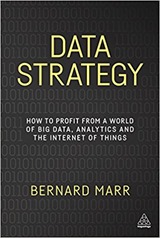 Data Strategy by Bernard Marr. The proposition of the book is that all businesses are now data businesses and that they should have a strategy to exploit data. He envisages such a strategy operating through a Chief Data Officer and thus at the highest level of a company.
Data Strategy by Bernard Marr. The proposition of the book is that all businesses are now data businesses and that they should have a strategy to exploit data. He envisages such a strategy operating through a Chief Data Officer and thus at the highest level of a company.
It is in the nature of things that to be successful you feel that you have to be saying something new and interesting. The hook for this book is big data, or the increasing availability of data, is a new and revolutionary thing. To be honest, I don’t really buy this but once we’re over the hook the advice contained within is rather good.
Marr sees data benefitting businesses in three ways, and covers these in successive chapters:
- It can support business decisions – that’s to say helping humans make decisions;
- It can support business operations – this is more the automated use of data, for example, a recommender algorithm you might come across at any number of retail sites is driven by data and falls into this category;
- It can be an asset in its own right;
This first benefit of supporting business decisions is further sub-divided into data about the following:
- Customers, markets and competition
- Finance
- Internal operations
- People
The chapter on supporting business operations contains quite a lot of material on using sensors in manufacturing and warehouse operations but also includes fraud detection.
Subsequent chapters cover how to source and collect data, provide the human and physical infrastructure to draw meaning from it and some comments on data governance. In Europe this last topic has been the subject of enormous activity over the past couple of years with the introduction of the General Data Protection Regulation (GDPR) which determines the way in which personal information can be collected and processed.
Following the theme of big data, Marr’s view is that the the past is represented by data in SQL tables whilst the future is in unstructured data sources.
My background is as a physical scientist, and as such I read this with a somewhat quizzical “You’re not doing this already” face. Pretty much the whole point of a physical scientist is to collect data to better understand the world. The physical sciences have never really had a big data moment, typically we have collected and analysed data to the limit of currently available technology but that has never been the thing itself. Philosophically physical sciences gave up on collecting “all of the data” long ago. One of the unappreciated features of the big detectors a CERN is their ability to throw away enormous quantities of data really fast. If you have what is a effectively a building sized CCD camera then it is the only strategy that works. This isn’t to say the physical sciences always do it right, or that they are directly relevant to businesses. Physical sciences work on the basis that there are universally applicable, immutable physical laws which data is used to establish. This is not true of businesses, what works for one business need not work for another, what works now need not work in the future.
Reading the book I kept thinking of A computer called Leo by Georgina Ferry, which describes the computer built by the J. Lyons company (who ran a teashop and catering business) in the 1950s. Lyons had been doing large scale data work since the 1920s, in the aftermath of the Second World War they turned to automated, electronic computation. From my review I see that Charles Babbage wrote about the subject in 1832 although he was writing more about prospects for the future. IBM started its growth in computing machinery in the late 19th century. So the idea of data being core to a business is by no means new.
The text is littered with examples of data collection for business good across a wide range of sectors. The Rolls-Royce’s engine monitoring programme is one of my favourites, their engines send data back to Rolls-Royce four times during each flight. This can be used to support engine servicing, and, I would imagine, product development. In the category of monetizing data American Express and Axciom are mentioned, they provide either personal or aggregate demographic information which can be used for targeted marketing.
Some entries might be a bit surprising, restaurant chains in the form of Dominos and Dickey’s Barbeque Pit are big users of data. Walmart also makes an appearance. This shouldn’t be surprising since the importance of data is a matter more of business scale than sector, as the Lyons company shows.
Marr repeatedly tells us that we should collect the data which answers our questions rather than just trying to collect all the data. I don’t think this can be repeated too often! It seems that many businesses have been sold (or built) Big Data infrastructure and only really started to think about how they would extract business value from the data collected once this has been done.
Definitely thought provoking, and a well-structured guide as to how data can benefit your company.
Aug 11 2018
Book review: Chrysalis: Maria Sibylla Merian and the Secrets of Metamorphosis by Kim Todd
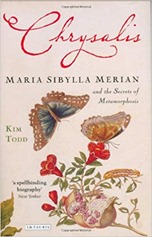 Chrysalis: Maria Sibylla Merian and the Secrets of Metamorphosis by Kim Todd has a self-explanatory title, it is about the life of Maria Sibylla Merian a scientific illustrator who lived 1647-1717, and the life cycle of insects – their metamorphosis.
Chrysalis: Maria Sibylla Merian and the Secrets of Metamorphosis by Kim Todd has a self-explanatory title, it is about the life of Maria Sibylla Merian a scientific illustrator who lived 1647-1717, and the life cycle of insects – their metamorphosis.
“Scientific illustrator” does not feel like the right term for Merian. She actively collected insects, at all stages in their lifecycles to study how they developed. This involved learning how how to nurture the insects. Her illustrations showed the insects through the stages of their lives alongside the plants on which they lived and fed. This is close to a study of ecology which didn’t really gain recognition as an area of study until the early 19th century. In her fifties she spent a couple of years in Surinam where she continued her study of more exotic creatures.
She was born in Frankfurt where she lived until she married and moved to Nuremburg, also in what is now Germany. Her father, Matthäus Merian was an illustrator, as was her stepfather Jacob Marrel, her husband Johann Andreas Graff, was one of Marrel’s apprentices. In 1685 Merian left her husband to go to a religious community in the Netherlands (the Labadists in Wieuwerd) with her mother and two daughters. She left Wieuwerd in 1691 to live in Amsterdam where she stayed until her death in 1717, aside a two year trip to Surinam.
Surinam had been “visited” by Europeans in the 16th century, and the Dutch had gained control of it from the English in the late 17th century. The English got New Amsterdam, now New York, as a quid pro quo. The colony was under the control of the Dutch West India Company and Labadists had been amongst those that gone out to the colony, their stories returning with them to the community at Wieuwerd. Surinam was not unknown land but it was tropical, and the colonial government were keen to get people out to the country to make a more well-rounded society. Merian went there to study insects in the same way as she had done in Europe but was, to some degree foiled by the conditions: deep jungle, rife with disease. Nevertheless her study there led to the publication of her book: Metamorphosis insectorum Surinamensium. I must admit I’m rather tempted by this facsimile.
Merian received a good deal of encouragement from father and stepfather in pursing art but the guild and business systems of the time made it difficult for her to work professionally as an artist. She seems to have got by by forming relationships with a range of nature enthusiasts for whom she carried out commissions, selling her illustrations individually, and trading in specimens for cabinets of curiosities.
She appears to have been remarkably independent for the period. Caroline Herschel lived somewhat later than her in England but her work in astronomy was tied to her brother, William. Similarly her exact contemporary, Elisabeth Hevelius, who had her own reputation as an astronomer was closely coupled to that of her husband.
Merian lived in a time when the study of nature was evolving. People were still seriously asking whether certain forms of life appeared spontaneously (the Royal Society’s cheese mite experiments). Linneas had not yet created his nomenclature for living things. Gentlemen were populating “cabinets of curiosities” but they were disorganised assemblages of artefacts. She was a contemporary of Jan Swammerdam, Antonie van Leeuwenhoek and Robert Hook.
The past can be difficult to understand, the meanings of words can shift quite dramatically. For example, René Antoine Ferchault de Réaumur said “The crocodile is certainly a fierce insect, but I am not in the least disturbed about calling it one!”.
This is all to say that Merian could quite reasonably be described as working at the cutting edge of biology.
Merian is surprisingly well-documented, this seems to be as a result of a couple of factors. Her family were moderately high-profile and as publishers / illustrators naturally left substantial records. She published several books which were reprinted over the next hundred years or so, her illustrations appeared, sometimes unattributed, in other publications. A chunk of her papers were acquired by Peter the Great and ended up in St Petersburgh where they were re-discovered in the 1970s.
Her work seems to have attracted criticism in the early 19th century, on grounds of inaccuracy understandable, since by this time her books were over 100 years old. This criticism was possibly also driven by the changing character of naturalists, they were starting to professionalise, and no doubt also linked to her gender. Many of her male contemporaries had some funny ideas but this is often glossed over.
I enjoyed Chrysalis it covers Merian’s life in some detail whilst bringing in a good flavour of the times in which she lived and the people she interacted with.
Aug 09 2018
Westendorf
This year’s summer holiday was to Westendorf in Austria, it was Thomas’ first trip abroad.
We flew from Manchester to Munich with Easyjet and got a taxi from Munich to Westendorf which averages a two hour drive. In future we’d probably get the train to Wörgl since the drive is prone to delay, and is very expensive. FastTrack security at Manchester is worth the £5 per head.
We stayed at Appartment Kurz in Westendorf which is a 5 minute walk from the village centre, close to the nursery slopes if you are there in winter. We had the ground floor apartment which had a south facing terrace looking onto the very quiet street. Two of the three bedrooms were in the basement which was excellent since this meant they were relatively cool – temperatures approached 30 degrees for the whole week.
Further measures to combat the heat were to go up the mountain in the gondola, attend the open air swimming pool, and have a 1 scoop ice cream available for 1€. The open air swimming pool was great – probably not so good if it was cooler.
Mum was staying in Westendorf whilst we were there which was really nice for finding things to do, during the week she was presented with a voucher by the tourist office for her 35th visit to the village! We used the lift system – and the local buses – which are a roughly hourly service between Worgl and Kitzbuhel barring ~3pm when there is no bus for two hours! The buses are free on the tourist card which seems to be an intrinsic part of staying in the village. We got weekly lift passes which are much more economic than pay as you go.
Day 1 – Sunday
A gentle trip up the Alpenrosenbahn with a walk along the back route to Choralpe, where marmots can be seen (maybe). Best value entertainment – the “Ball run” – 2€ for a small wooden ball to roll down a run back towards Talkaser.
Day 2 – Monday
We took the bus to Hopfgarten and then the gondola to the top of Hohe Salve and back down to Hexenwasser, at Hoch Soll. Hexenwasser is a modest outdoor water park which is free to use. We had a ride up and down a chairlift, the only one running on the system, so Thomas could enjoy the experience.
Day 3 – Tuesday
To Brixen and then up to Filzalm See which is another waterpark this time centred around a little lake. It has a barefoot walk, featuring a lot of mud and a mechanical treadle which allows you to make a Poseidon-like figure to rise from the waters of the lake.
Day 4 – Wednesday
No lifts today, we walked the Wohlfühlweg (Wellbeing way) first thing in the morning, this is a trail along the edge of the woods by Westendorf that takes in some land-art style features. On our way back to the apartment we stopped off at Cafe Elisabeth for cake, so much cake. I’ve been to Cafe Elisabeth many times, it is only this time that I realised that Konditorei means “cake shop” in German, and not “air-conditioned” as had always assumed. In the afternoon we went to the outdoor swimming pool, very pleasant in the heat and quite reasonably priced – particularly if you go after 2pm.
Day 5 – Thursday
Back up the Alpenrosenbahn, I went to the summit by Choralpe. In the evening there was a market in the village where we got chicken and chips for our dinner.
Day 6 – Friday
Filzalm See again, early in the morning followed by swimming in the open air pool in the afternoon. I went for a walk through the woods where I saw some pigs.

